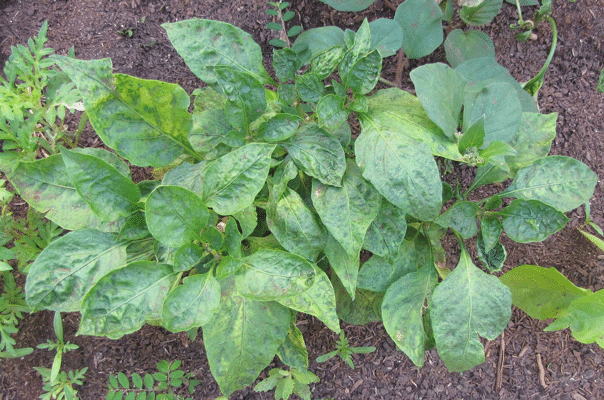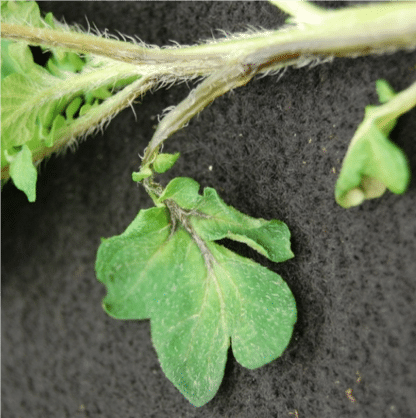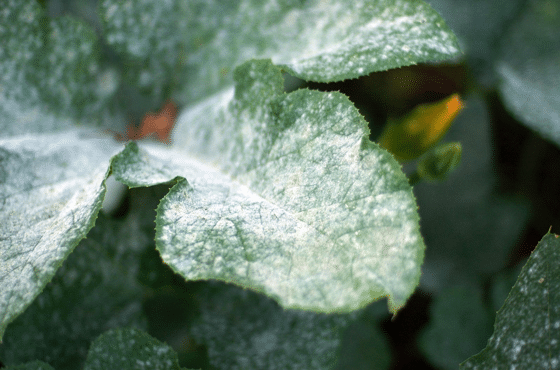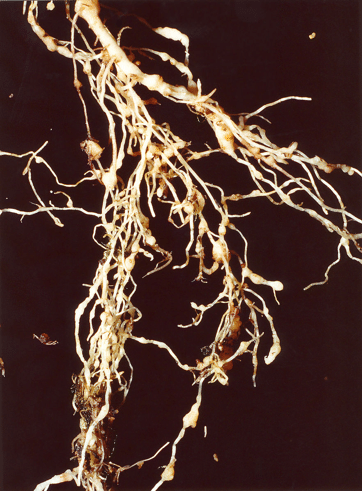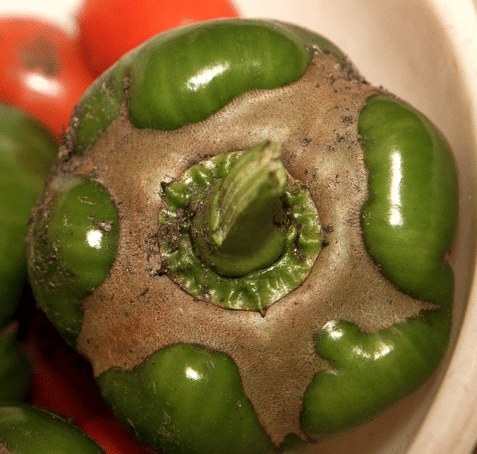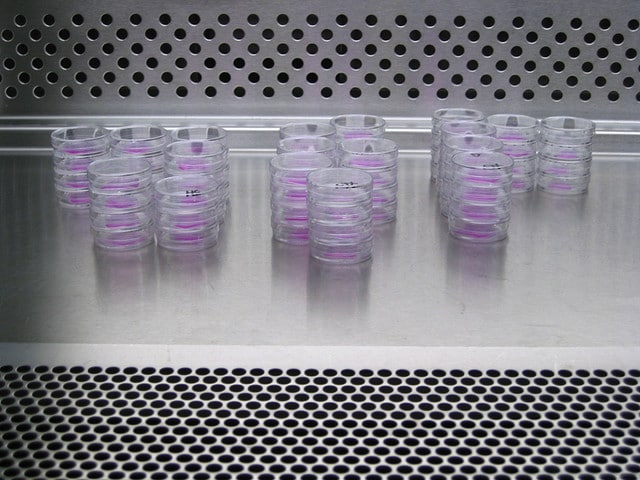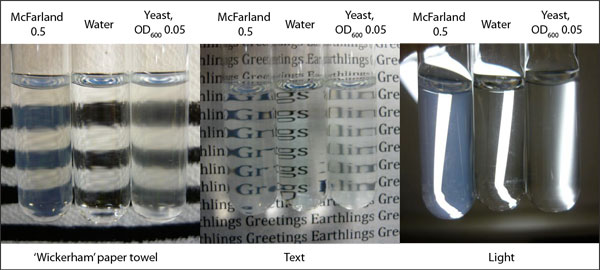In theory, the greenhouse is a controlled laboratory environment where only the organisms you’ve introduced live. But in practice, just as other laboratory environments suffer from ‘unwelcomed guests’ (e.g. contamination and infestation), greenhouses are not always as sterile as you would like. To avoid any experimental issues, you have to be vigilant about these pesky vermits. Don’t ignore the signs that not all is well in your greenhouse (i.e. spots on leaves, yellowing leaves, insects) in the hope that it’ll resolve itself. Take swift action as delay will compound your problem.
Of course, the easiest way to remedy any greenhouse infestations or contaminations is to safely dispose of the infected plants and soil, and disinfect the pots. However, this not always possible. The infected plants may be a crowning achievement of a 6-year breeding program – or your Ph.D. In this case, you need to determine the type of infestation and take appropriate measures. But be aware that any infection and its treatment will change the physiology of the plant.
Viruses and Viroids
Viruses and viroids cause various spots on plants. They are difficult to properly diagnose and treat, so the first measure is to quarantine new plants before introducing them into the greenhouse. Unlike bacteria that are often infected only one species or non-resistant cultivars, viruses often infect several species. For example, maize dwarf mosaic infects sorghum and sugarcane, in addition to corn.
Insects, such as aphids, can be virus vectors. Measures for virus control and prevention include lab hygiene, including sterilization of tools and regular washing of lab coats.
Bacteria
Phytopathogenic bacteria can also cause spots on stems and leaves. They stunt the growth and can kill the plant if untreated.
If the spot is black and doesn’t increase in size, you are in luck. This means that the plant cells died (necrosis) and prevented the spread of the disease. In this case, you can just remove the affected section, disinfect the removal site, and save the plant. But you need to treat the plant to prevent re-infection (see below)
However, if the spot is increasing in size and/or similar spots are appearing on the other part of the plant, the infection is spreading, usually using xylem or phloem. Use systemic treatment.
Bacterial diseases are difficult to control, so preventing the spreading of disease is emphasized. Copper compounds are a traditional way of treating bacterial diseases, but copper is a heavy metal that accumulates in the soil and will stunt and distort plants growth in the future. For many bacterial diseases, you can use antibiotics, such as streptomycin or oxytetracycline.
Fungi
Collectively, fungi cause more plant diseases than any other group of plant pest, with over 8,000 species shown to cause disease. The most common disease of greenhouse plants is powdery mildew fungus that can be diagnosed by white powdery spots on the leaves and stems, especially close to the ground. In general, the diagnostic features of fungal infection are flour-like white spores on the leaves and long threads of fungal cells (hyphae) that you will be able to see between higher plant cells under a microscope.
While most phytopathogenic bacteria are non-spore forming, fungi spread their spores through the air. Moreover, while viruses and bacteria usually require an opening (wound) to infect the plant, fungi can force their way into the plant using special hyphae modifications called appressoria.
Fungi thrive in a humid condition with no air circulation. Thus, even using a fan to get air circulation will reduce the fungal diseases in your greenhouse. If possible, remove the lower leaves closest to the soil as it will increase air circulation.
It goes without saying that you need proper lighting in all the corners of your greenhouse. While some of the fungi do not care about light, most of them prefer dark places. Ensure that the soil has proper drainage, and a regularly monitored irrigation regime – maximum water is not always the best practice. Leaving plants standing in water for long periods encourages root rot.
If your crop or greenhouse has a history of the fungal problem, you can pre-treat seeds with fungicide and use it to treat the soil. However, it’s more efficient to apply fungicide before the symptoms appear.
Nematodes
Now we are moving from the realms of bacteria and fungi into the kingdom of animals that love eating plants.
Nematodes are microscopic roundworms, relatives of the model organism C. elegans. Phytopathogenic nematodes live in soil and can attack roots causing root lesions, root tip damage, excessive root branching. As a result, the plant wilts despite enough moisture and declines despite all the nutrients available. Nematodes that live in bulbs and stems produce stem swelling and shortened internodes. Bud and leaf nematodes distort and leaf tissue.
If you suspect nematode infestation, you should examine affected plant parts under a microscope. Wriggling tiny worms are hard to miss in the plant tissue.
There are chemical nematicides but as they poisonous for plants as well, apply them carefully avoiding the roots. After an infestation, all the soil should be fumigated or autoclaved.
Mites
Mites are not actual insects but are classed as a type of arachnid, relatives of spiders, ticks, and scorpions. They can be microscopic or noticeable by a naked eye. Soil mites are harmless, but there are also pests such as spider mites, broad mite, tarsonemid or cyclamen mites.
Mites usually leave in colonies and damage plants by piercing the cuticle and sucking out the content. Losing cytoplasm leads to stems and leaves shrivelling and falling off.
The treatment measures include prune infested parts of plants and discarding them. Don’t hesitate to pull entire plants to prevent the mites from spreading to its neighbours. Insecticides that are geared up towards insects, don’t work on mites (or they develop resistance), so use organic control measures, for example, spray with neem oil.
Finally, whatever invisible bug is bug eating your experiment, don’t forget to determine the infection pathway – water, infected plant material, soil, tools – and terminate the spread of an infestation. Remember that most pathogens can lurk in soil for years and re-infect. Leave detailed description of what happened and how you dealt with it in your lab book.
Sources:
- The Ohio State University has produced a series of useful fact sheets that can be an introduction into plant diseases.
- George Nicolas Agrious. Plant Pathology. Elsevier Science Publishing Co Inc (2005) ISBN10 0120445654
